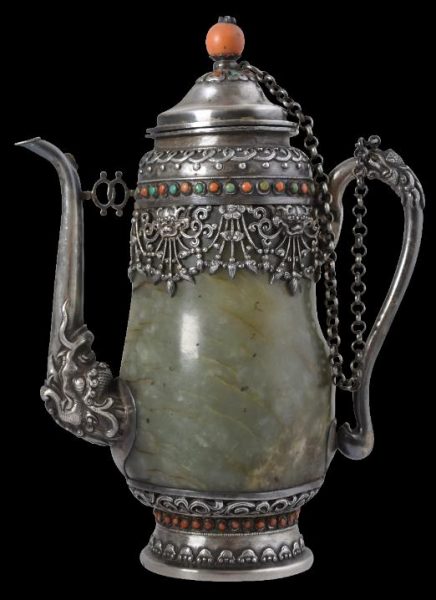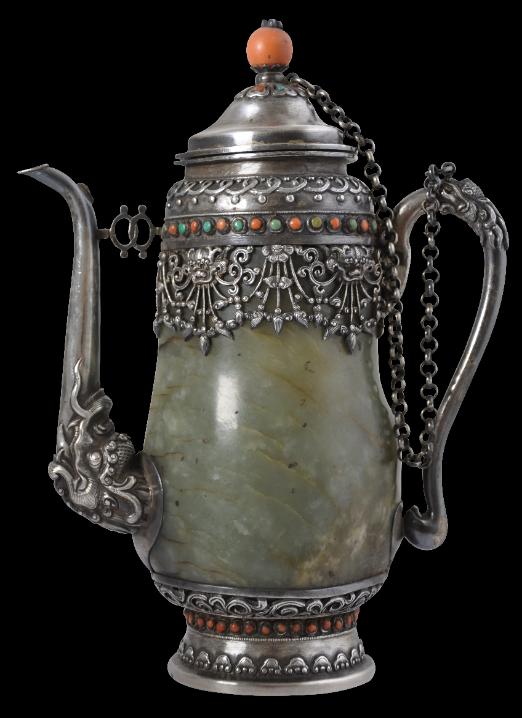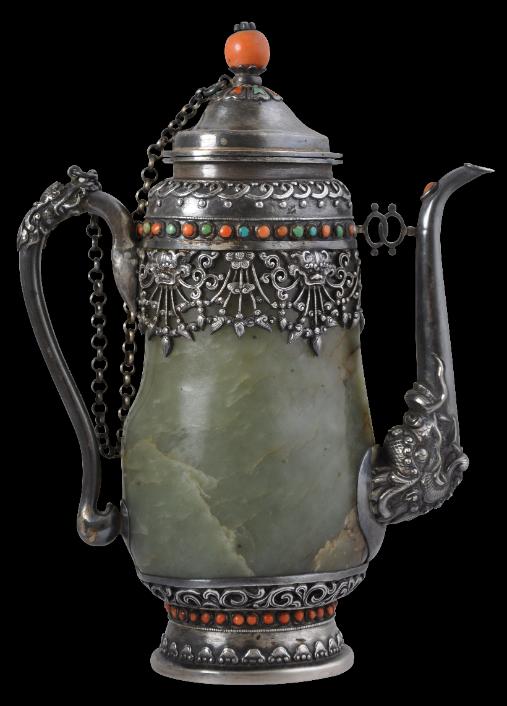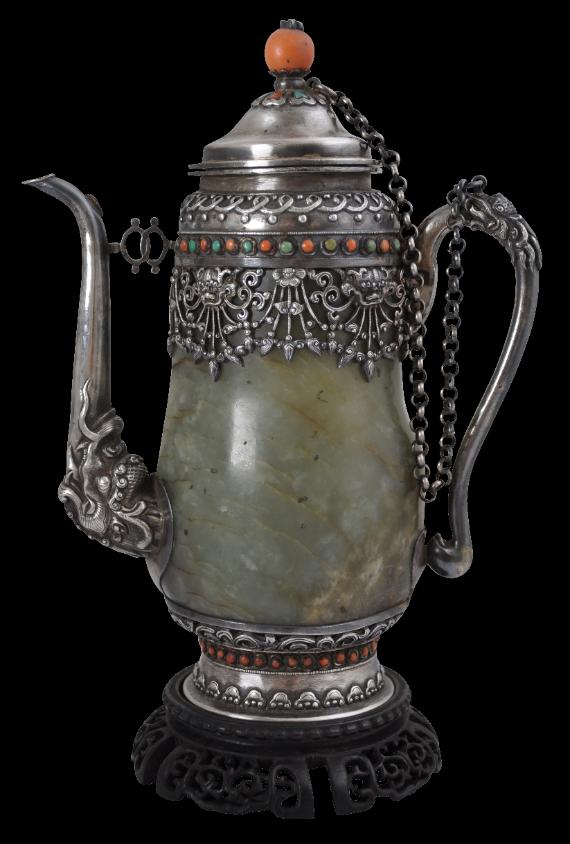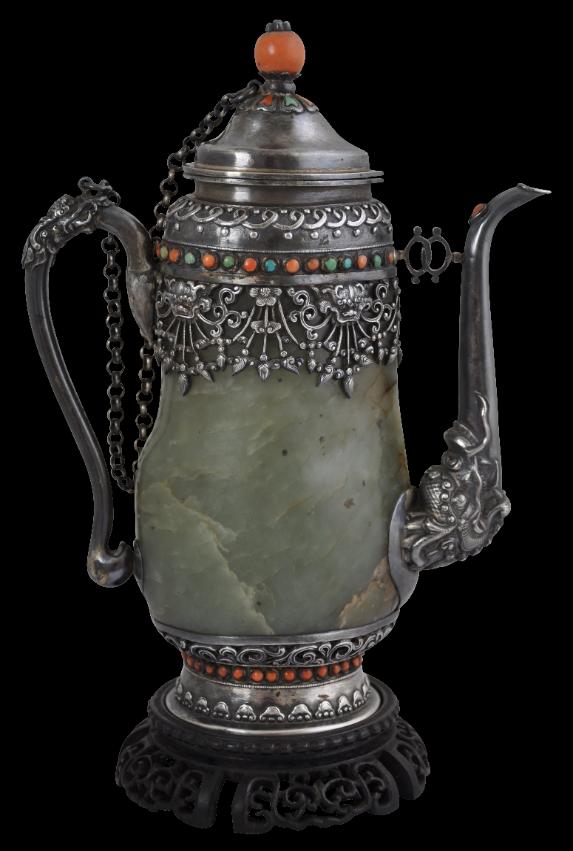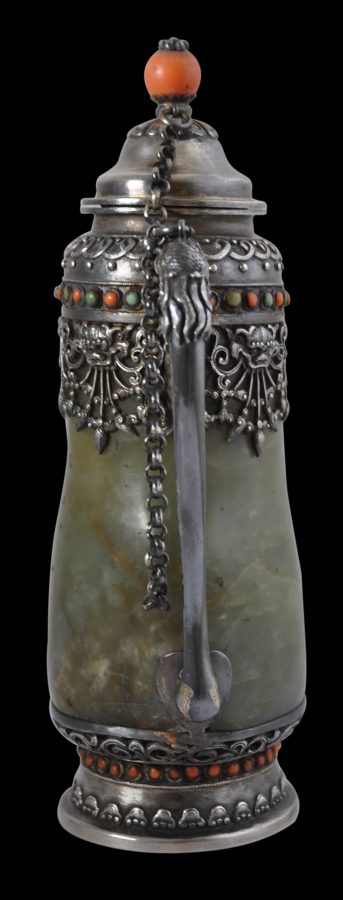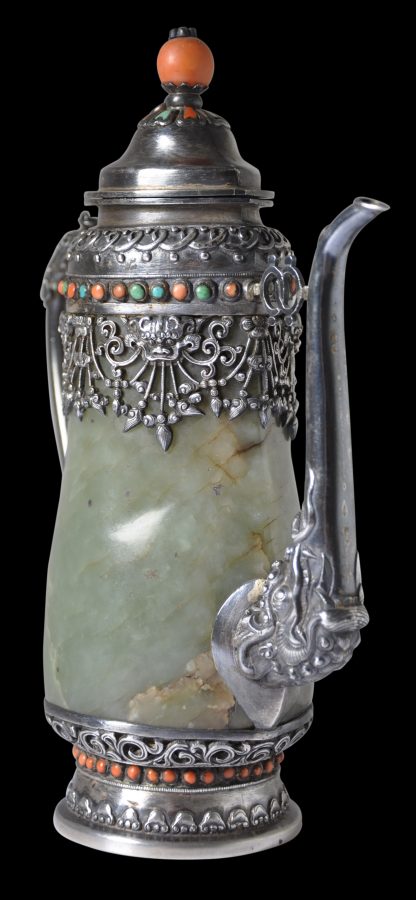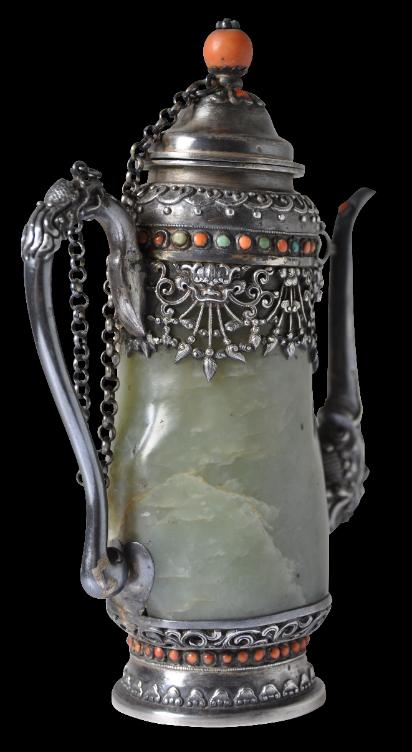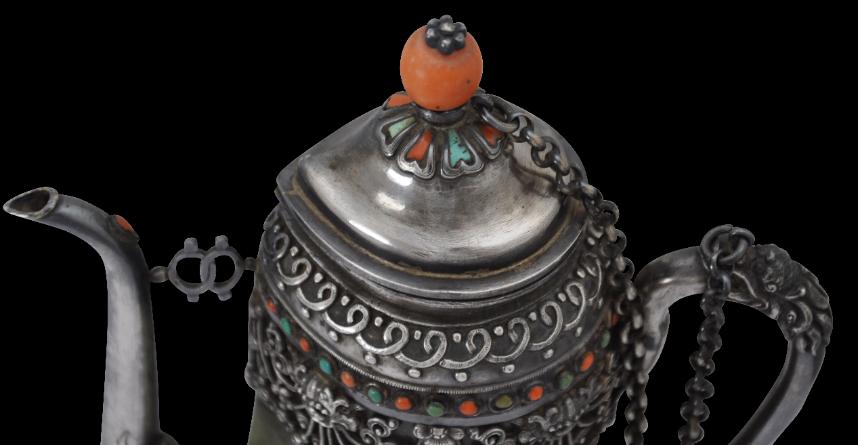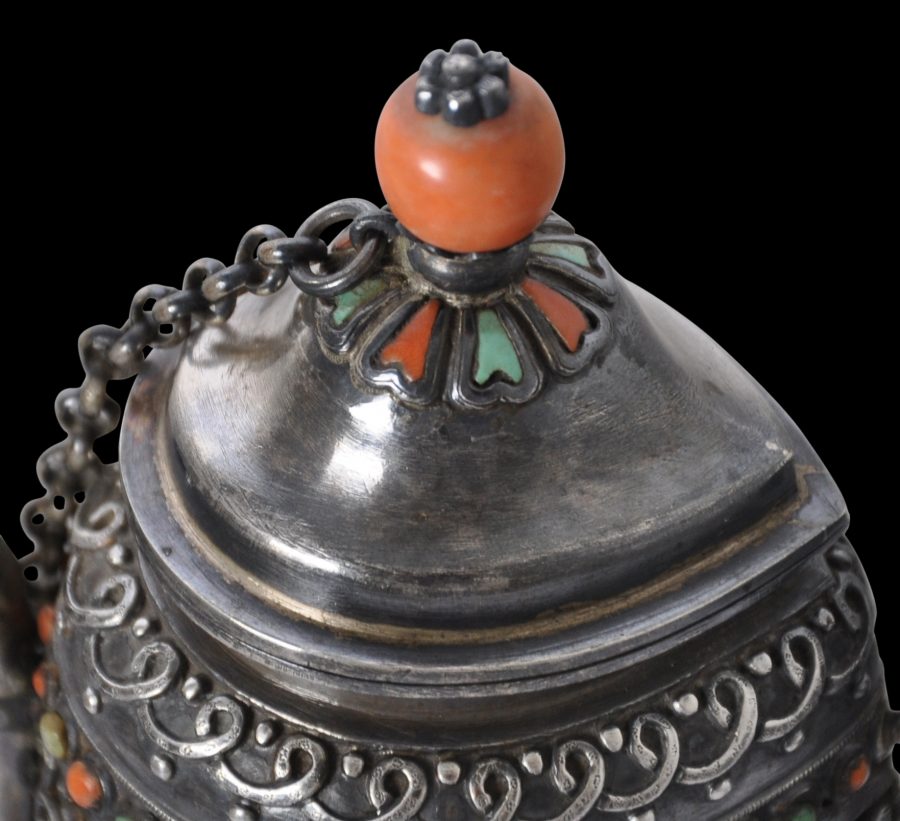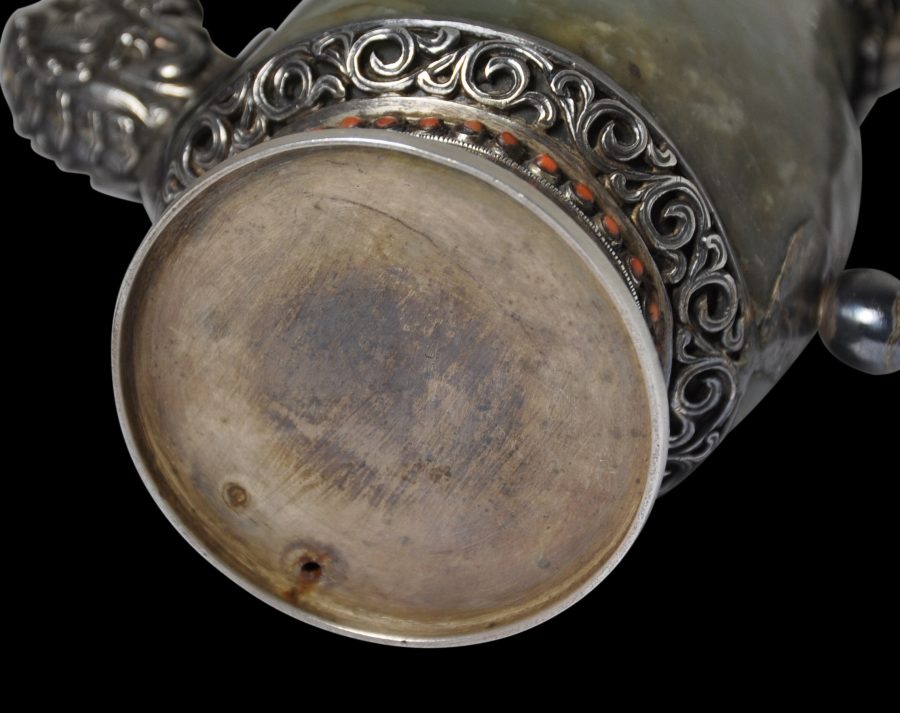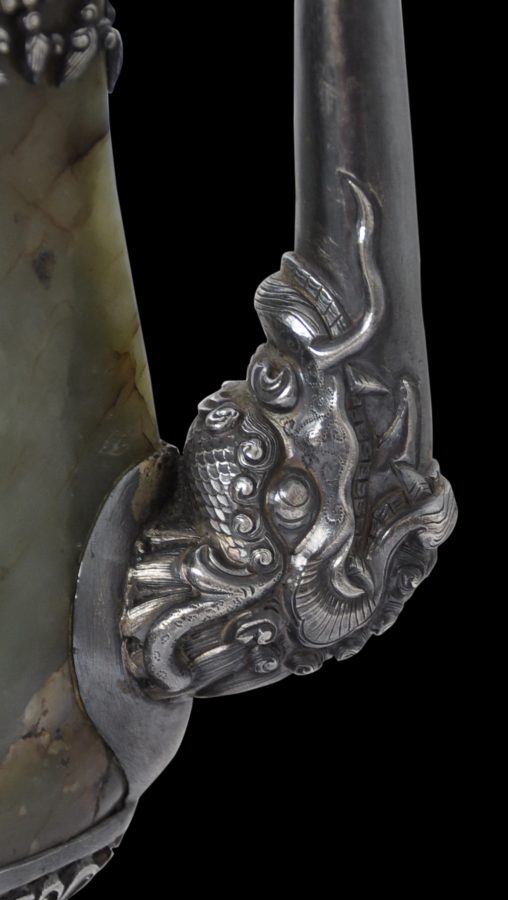Enquiry about object: 3860
Tibetan or Mongolian Ceremonial Nephrite Jade Ewer
Eastern Tibet or Mongolia circa 16th century
height (without the stand): 19cm, width: 14cm, weight: 750g
Provenance
Acquired in the UK, from the estate collection of Dr George Yuille Caldwell (1924-2016). Dr Caldwell, an English-born physician spent much of his professional life practicing in Singapore. He amassed a large collection of Chinese jade, porcelain and ethnographica during that time.
This remarkable ewer is closely related to a ceremonial urn in the Los Angeles County Museum of Art, attributed to circa 16th century Eastern Tibet or Mongolia and described by Dr Pratapaditya Pal, as ‘one of the most spectacular ritual objects to have come out of Tibet’ (Pal, 1990, p. 294). It is possible that the two are by the same hand or by the same workshop.
Click here to see the LACMA urn. The urn is also illustrated in Pal (1990, p. 296).
The ewer is from a single piece of nephrite jade – perhaps a jade boulder, which has been hollowed out to make the body of the ewer. It is well-carved and polished.
The elegant, filigree-like silver lace-work at the top of the body of the ewer here falls curtain-like over the jade with the jade visible through the open-work. The lace-work features numerous kirtimukha faces. A row of alternating coral and turquoise cabochons is above this followed by a chased silver border of curl motifs.
The domed silver lid is in tear-drop form and is surmounted by a petal motif with the petals inset with alternating coral and turquoise plaques, each carefully cut into a petal shape. This is then finished with a large coral sphere finial on which sits a small silver flower motif.
The spout emerges from a beautifully worked makara’s mouth and is joined to the body by a very fine double-circle link. The hollow silver tube handle is chased with a dragon’s head, on its shoulder.
A generous silver chain links the dragon’s snout to the finial on the lid.
The ewer sits on a silver ring foot which is decorated with petal motifs, a row of coral cabochons, and a swirling pierced border in relief.
Pal further comments on the LACMA urn that ‘whilst its exact function is not known, its quality indicates is ceremonial use in an important monastery. Nor can one be certain of its origins. It could have been made in China and presented to a Tibetan monastery. Such ritual objects of great quality were often donated to important Tibetan lamas and monasteries by Chinese emperors….The silver fittings and the lid may have been made in Tibet at such a well-known centre as Derge or Kham, or the entire object may have been a product of an imperial workshop in China.’
Current thinking is that the LACMA urn is either from Eastern Tibet or Mongolia, although China cannot be ruled out.
The ewer here is in excellent condition. There is a very small gap in the jade where the lower handle attaches which is probably the result of a natural inclusion in the jade. There are no repairs and all the stones are intact. It sits on a later Chinese pierced wooden stand that appears to have been custom-made for it. Like, the LACMA urn, it is a remarkable and extremely rare ritual object.
References
Pal, P., Art of Tibet, Los Angeles County Museum of Art, 1990. :


